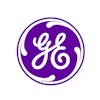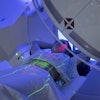Dear Molecular Imaging Insider,
In this edition of the Insider, you can see how a newly developed deep-learning algorithm from Swiss researchers could become a valuable tool for detecting small, FDG-avid pulmonary nodules on oncologic PET/CT scans. In particular, the authors showed that their approach could bolster nodule detection accuracy when paired with block sequential regularized expectation maximization reconstruction.
In other news, a team from the Imperial College Healthcare National Health Service (NHS) Trust in London has elaborated on how lutetium-177 peptide receptor radionuclide therapy is showing significant promise in the treatment of patients with inoperable or metastasized neuroendocrine tumors. The group received a certificate of merit from the judges at the RSNA 2019 congress in Chicago.
At the same meeting, researchers from the University of Düsseldorf in Germany unveiled a pair of PET/MRI studies. In the first presentation, the hybrid modality outperformed whole-body MRI and ultrasound for the accurate staging of breast cancer, but it fell short against invasive sentinel lymph node biopsy. Imaging modalities still fail to reliably differentiate the N-positive and N-negative breast cancers, compared with the gold standard of sentinel lymph node biopsy, the authors concluded.
In a second study from the same institution, the main aim was to evaluate the diagnostic accuracy of whole-body MRI compared with whole-body FDG-PET/MRI for the initial tumor, node, and metastases (TNM) staging for newly diagnosed, histologically proven breast cancer patients. PET/MRI proved superior to MRI alone.
Also at RSNA 2019, Dutch researchers posed the question of how soon after aortic prosthetic heart valve implantation can patients safely undergo FDG-PET/CT. Their answer? A scan is quite feasible in the first 12 months after the procedure. The results determine consistent baseline levels of FDG uptake at three different time points within one year, and they also question the European Society of Cardiology's recommendation that patients wait at least three months before undergoing an FDG-PET/CT follow-up.
Be sure to stay in touch with the Molecular Imaging Community on a daily basis for the latest research and news from around the world.













